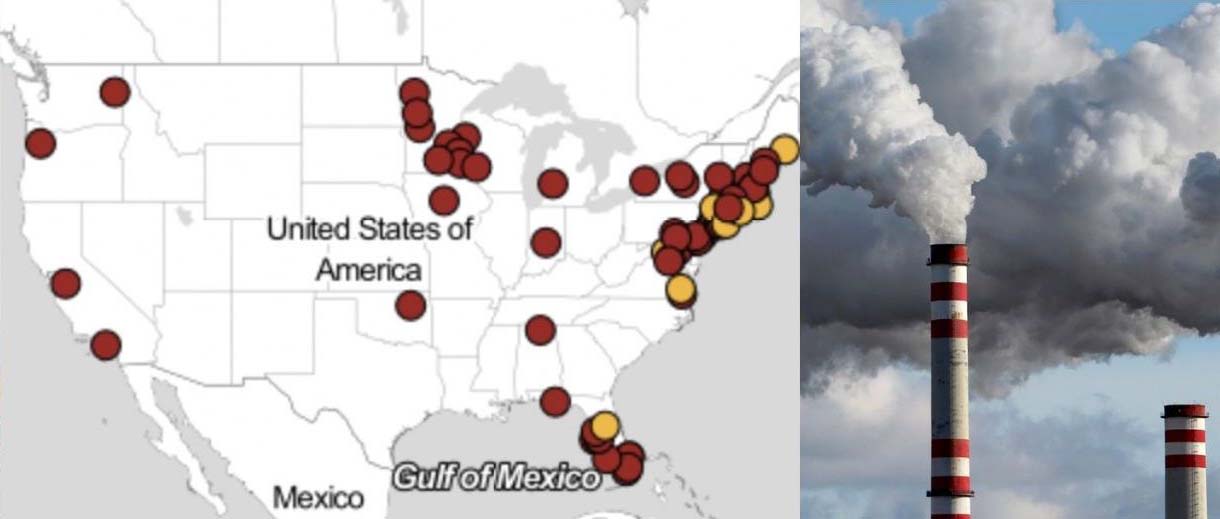
Tishman Environment and Design Center’s Work Reveals Most Incinerators Pollute Low-Income and Communities of Color and Worsen Climate Change
Cities across the United States have been recognizing the many drawbacks of waste incinerators, which contaminate the air, soil, and water. While many cities are moving away from incineration, 72 municipal solid waste (MSW) incinerators still operate in the United States, and little is understood about their impacts. A new interactive map from the Tishman Environment and Design Center pinpoints their locations for the first time, revealing that the vast majority are located in vulnerable communities already affected by excess pollution.
“Many of the incinerators currently operating are near the end of their lifespans, and cities will have to reconsider whether to keep investing in this dying industry,” said Adrienne Perovich, assistant director of the Tishman Center, in a press release. “We designed this map to give local municipalities concise and accurate information on the harmful effects this industry has on its residents, especially now since they have the opportunity to transition away from these aging, polluting facilities.”
The new map provides a snapshot of each incinerator’s effect on the surrounding community, including the amount of waste burned per day, the amounts of toxic pollutants released into the air, the total population living within a three-mile radius of the facility, and the location. Nearly 4.5 million people in the United States are exposed to pollution from waste incinerators, and 85 percent of waste incinerators are located in environmental justice (EJ) communities (lower- income communities and/or communities of color). Many of the communities where incinerators are located are already experiencing pollution from other industrial sources, causing cumulative impacts that regulators fail to take into account when setting emissions regulations.
The new map builds upon the Tishman Center’s research into the human and ecological impacts of municipal waste incineration, detailed in the report U.S. Municipal Solid Waste Incinerators: An Industry in Decline and state-specific reports on the five states with the largest number of incinerators—Florida, New York, Minnesota, Massachusetts, and Pennsylvania. The earlier report uncovered for the first time the huge percentage of incinerators in EJ communities.
Incinerators create major climate impacts through the release of greenhouse gases, producing almost as much CO2 as coal burning. They also pose a significant public health hazard through the emission of large amounts of carbon dioxide, mercury, lead, and other toxic materials associated with increased rates of asthma, heart disease, miscarriage, stillbirth, kidney disease, high blood pressure, and lung disease. Notably, long-term exposure to particulate matter has been shown to increase the risk of death from COVID-19.
Many cities have moved away from trash incineration in favor of zero-waste solutions, which encourage responsible production, consumption, reuse, and recovery without the burning of garbage. Cities and states can invest in recycling infrastructure and composting programs, with state legislatures holding producers accountable through minimum recycled content standards in their manufacturing processes.
“The current COVID-19 crisis requires us to take a close look at the pollution from this dirty industry,” said Perovich in a press release. “State and local officials must reconsider any future incineration investments through the lens of COVID-19 deaths and the disproportionate impacts on environmental justice communities.”